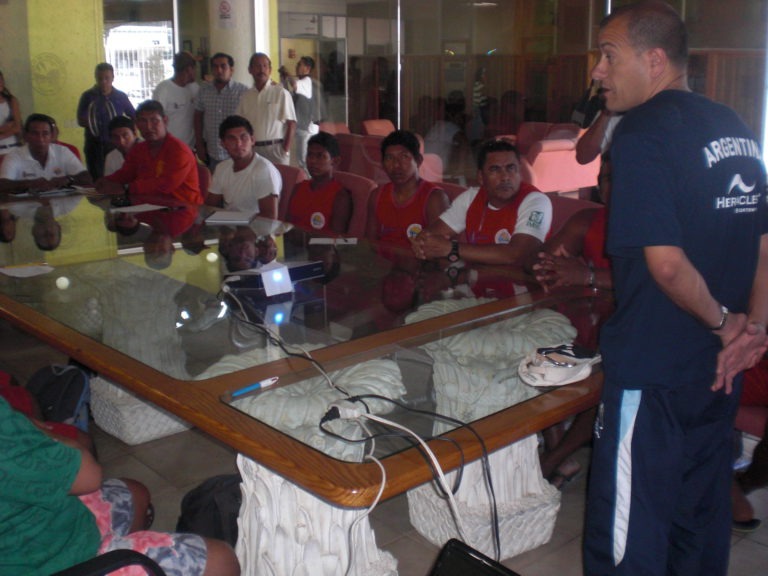Recommendations
We offer a set of valuable general tips to be safe and offer safety when you are in a water environment.
First
Know and comply with safety standards. Many activities can be developed in the water and its surroundings: beaches, rivers, dams, pools, etc. gather people willing to enjoy themselves in water under the sun. It is necessary to know and respect basic safety standards to have a memorable time. We also recommend to know and consider the standards for aquatic activities the naval authorities establish in your area. Wear the right life vest for your water activity. Be sure you will not damage or injure anybody with your practice.
Second
Perform water activities in areas with lifeguard service. Swim in areas supervised by lifeguards. Respect their directions. Know and respect beach flags. Swim along the shore. Never swim far away offshore. Never swim alone
Third
Identify bathing areas and potential risks: depth, water temperature, currents, waves, whirls, and weather conditions. Never dive into unknown bottoms or in blurred waters. Check tides, waves and currents. Be careful with caves, rocks, nets, fishing lines, algae, etc.
Fourth
Regulate the body temperature. The body must slowly get accustomed to the water temperature. Acclimatize before getting into the sea. If you are too cold, go out immediately. Be especially careful with children: if your child trembles or has goose bumps, take him out of the water and warm him. Avoid long exposure to sun. Use sunblock lotions, and drink water regularly.
Fifth
Respect digestion time. Avoid excessive meals before swimming. Enter the water within 2-3 hours from the last meal, especially in case of extremely cold water or if you will exercise hard.

Sixth
Always watch children. They are not aware of danger. They can drown in shallow waters. Sometimes, an area safe for adults might be a real hazard for children. In overcrowded areas, children easily get lost.
Seventh
If you see someone in danger, ask for help. Call the lifeguard: he is the only professional ready and qualified to intervene. If you are alone, never try to rescue a drowning person. Many times, a dangerous situation ends with two drowning victims: the victim himself and the desperate helper who becomes the second victim. Only help throwing an element to the victim (a floating or light one) to calm him down and to enable buoyancy. Always place the element between the victim and the rescuer to avoid contact.
Eighth
If you happen to see a person in danger, calm down and ask for help. If you are in a dangerous situation, keep calm and try to relax. You can then make better decisions. Raise your hand to ask for help. If you are relaxed you will float more easily.
Nineth
Watch hygiene and safety standards in pools. Do not push other people. Do not run around the swimming pool. Do not jump into the water if you are not sure if anybody is underwater.Do not sink other bathers. Do not eat, drink or smoke in the pool area. Comply with hygiene standards, medical checkup, showers, and internal rules of the facility.
Tenth
If you are alone, analyze the place characteristics (currents, waves, rocks, winds) and your limitations before an intervention. Look around for any element to help the victim, a floating element if possible. Get it closer to the victim or throw it to him for buoyancy. Never contact the victim directly. Never risk yourself: you can become the second victim.

Teach CPR to the community: teach at school.

Teach prevention, swimming, and basic lifesaving at school.

Teach at school

Be aware of depth. Watch your kids.

Know the water environment.

Codes and signals in
bathing areas

Talk to the young

Teach and train lifeguards on tactics and strategies.

Honor the lifeguards
and their tasks.

Professional and auxiliary elements for water rescue.

Inform and guide the community

